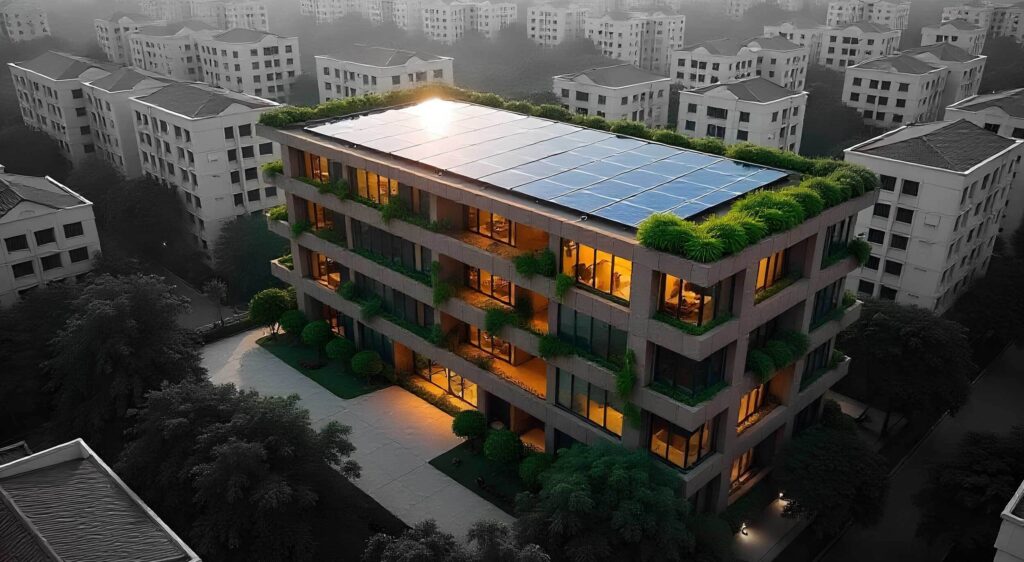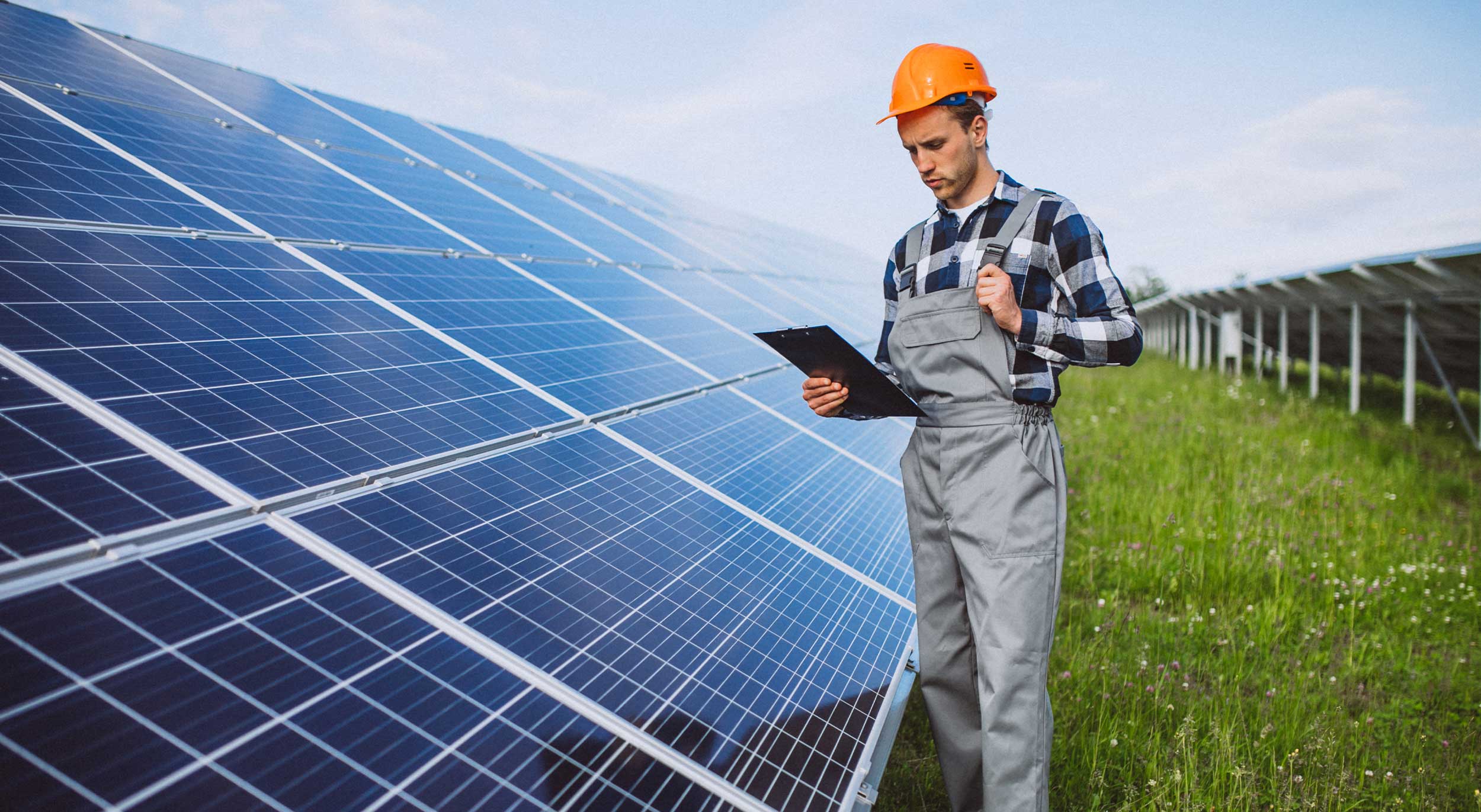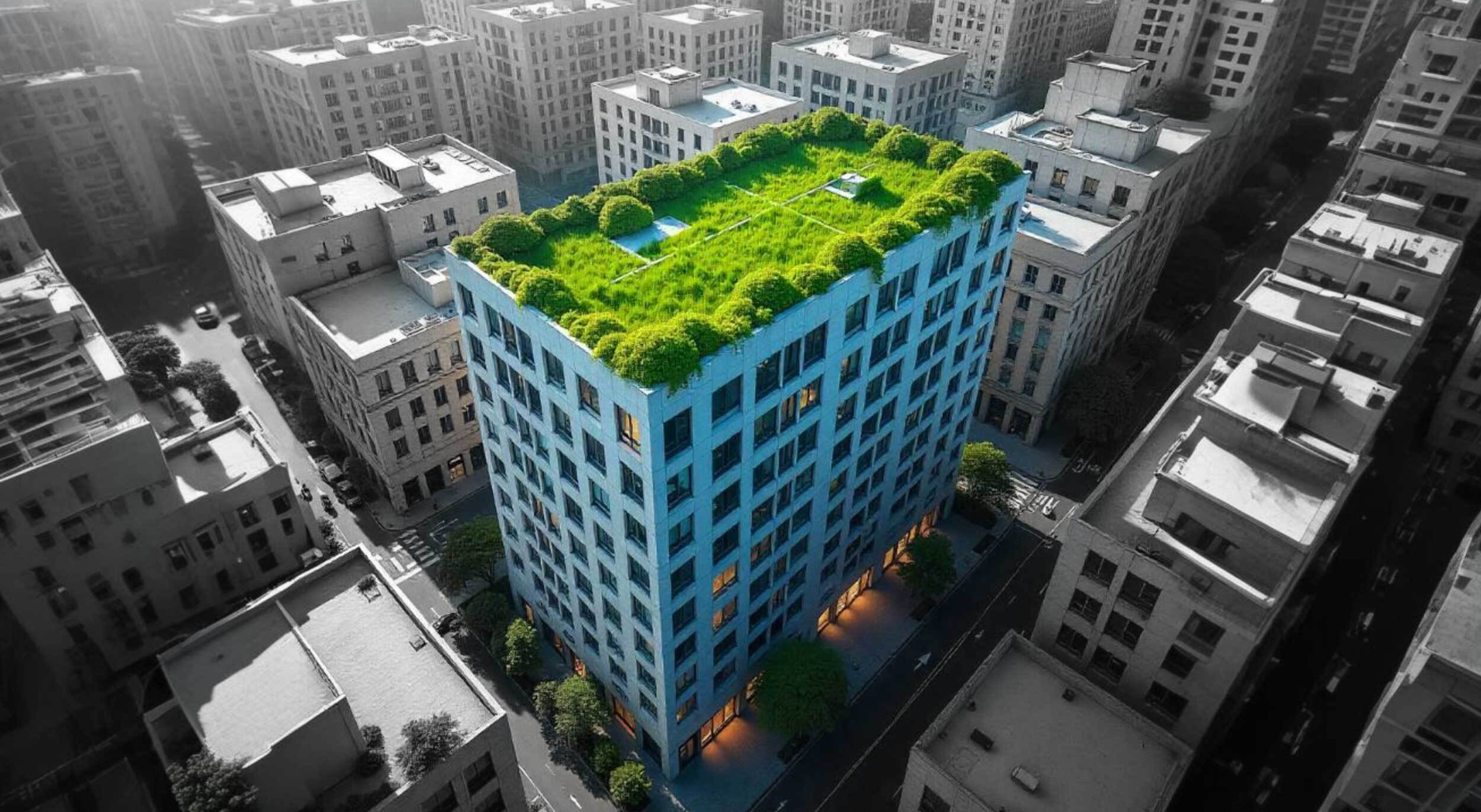As the world races toward achieving net-zero carbon emissions, the focus is increasingly shifting from new construction to retrofitting existing buildings. Retrofitting, the process of upgrading old structures to improve energy efficiency and reduce emissions, is becoming a critical component of sustainable building efforts globally. In India, with its rapidly expanding urban population and older building stock, retrofitting offers unique opportunities and challenges. This blog explores global retrofitting trends, examines India’s specific needs, and highlights Accacia’s contributions to creating more sustainable, energy-efficient buildings.

The Global Perspective on Retrofitting for Sustainability
Globally, retrofitting is recognized as one of the most effective ways to reduce emissions in the built environment. With many structures expected to last for decades, retrofitting existing buildings is crucial for hitting carbon reduction targets. Key global trends in retrofitting include:
- Energy-Efficient Upgrades: The installation of energy-efficient lighting, HVAC systems, and insulation materials to reduce energy consumption and increase operational efficiency.
- Smart Building Technology: Integrating smart systems that monitor energy use in real-time and optimize energy performance based on usage patterns.
- Renewable Energy Integration: Retrofitting roofs with solar panels, utilizing geothermal heating, and other renewable energy sources to lower reliance on non-renewable energy.
- Green Certifications: Many global markets incentivize or mandate certifications like LEED, BREEAM, and WELL that reward energy-efficient, eco-friendly retrofits.
- Financial Incentives: Countries like the U.S. and EU member states offer tax breaks, grants, and low-interest loans to encourage retrofitting, making it financially viable for property owners.
While these initiatives have gained traction in developed economies, retrofitting in emerging markets like India faces a distinct set of challenges and opportunities.
India’s Unique Needs and Constraints in Retrofitting
India’s urbanization rate and economic growth are unprecedented, leading to an urgent need for sustainable building solutions. However, retrofitting in India presents several unique considerations:
- Aging Infrastructure: Many commercial and residential buildings were built before modern sustainability standards, making retrofitting more complex and costly.
- Cost Sensitivity: Property owners may hesitate to invest in retrofitting due to the high initial costs and uncertain return on investment (ROI). While retrofitting provides long-term savings, upfront expenses remain a challenge for many stakeholders.
- Lack of Awareness: Sustainable building practices are still relatively new in many parts of India, and there is limited awareness among building owners about the benefits of retrofitting.
- Regulatory Landscape: India has yet to adopt mandatory energy efficiency standards across all building types. While the Energy Conservation Building Code (ECBC) applies to commercial buildings, broader implementation could drive adoption.
- Climate Variability: India’s diverse climate zones require customized retrofitting solutions that can optimize energy efficiency in different environmental conditions, from humid coastal areas to dry, hot interiors.
Despite these challenges, there is growing momentum toward green retrofitting. Policies such as the Smart Cities Mission and state-level incentives are encouraging sustainable upgrades, and awareness is increasing about the role of retrofitting in achieving net-zero goals.
Accacia’s Role in Retrofitting for Energy Efficiency and Lower Emissions
Accacia plays a vital role in accelerating sustainable retrofitting in India by providing data-driven insights and facilitating the use of energy-efficient materials and systems. Here’s how Accacia is contributing to India’s green retrofitting movement:
- Real-Time Energy Monitoring: Accacia offers cutting-edge technology for tracking and analyzing building energy usage in real time. By identifying energy inefficiencies, Accacia enables property owners to target areas for retrofit, reducing unnecessary energy consumption and lowering emissions.
- Data-Driven Decision Making: Retrofitting requires an understanding of where emissions and energy costs are highest. Accacia’s platform integrates data from utility bills, smart meters, and building management systems, giving owners the insights they need to make cost-effective, impactful retrofits.
- Optimized Building Operations: Through its AI-driven platform, Accacia can help building managers predict and manage energy peaks, schedule efficient HVAC operations, and automate systems for optimal performance, significantly reducing operational energy needs.
- Green Material Marketplace: A significant part of retrofitting involves upgrading materials to sustainable alternatives. Accacia’s marketplace connects developers and property owners with green materials, helping them access options with lower embodied carbon and better energy efficiency.
- Compliance and Certification Support: Accacia assists clients in aligning with energy efficiency codes, such as ECBC, and prepares documentation for green building certifications like IGBC and LEED, making it easier for properties to qualify for incentives and recognition.
- Collaboration and Partnerships: Accacia partners with developers, financial institutions, and government bodies to promote sustainable building practices. By providing transparent data and clear benefits, Accacia helps build a strong case for retrofitting as a viable and necessary investment for India’s future.
The Path Forward for Retrofitting in India
As India pushes toward its net-zero target, retrofitting will play an increasingly central role in reducing emissions from the built environment. Government policies and financial incentives will be crucial in accelerating retrofitting adoption. Expanding the ECBC to cover more building types and strengthening green certification standards would also create a more supportive environment for retrofitting.
For Accacia, the goal is to continue empowering property owners and developers to make sustainable retrofitting decisions that benefit both the planet and their bottom lines. By providing data-driven insights, a green material marketplace, and real-time monitoring, Accacia is transforming the way India’s built environment approaches retrofitting.
Conclusion
Retrofitting India’s existing buildings for sustainability is not just an option; it’s an imperative to meet climate targets and ensure that the nation’s infrastructure can withstand future demands. While global trends in retrofitting offer valuable insights, India’s unique market calls for tailored solutions that address local needs and constraints.
Accacia’s role in this journey exemplifies the power of technology and data in making sustainability actionable. As more buildings undergo sustainable retrofits, India will be better positioned to meet its climate goals and lead the way in building a greener future for the world.
















